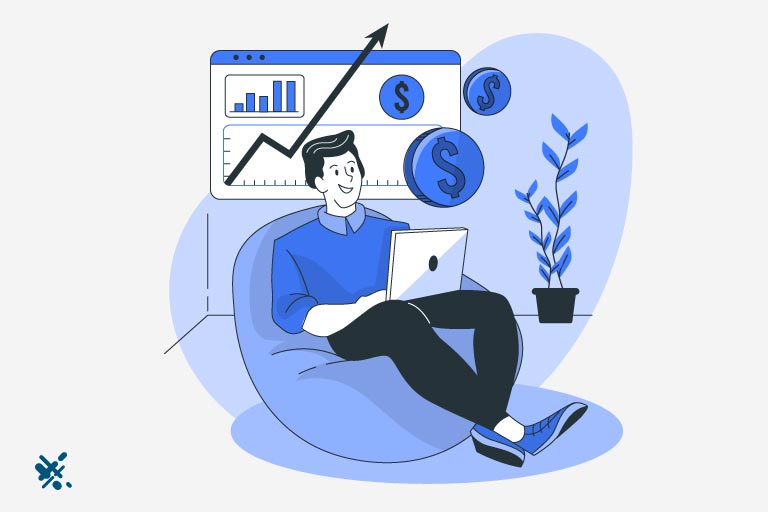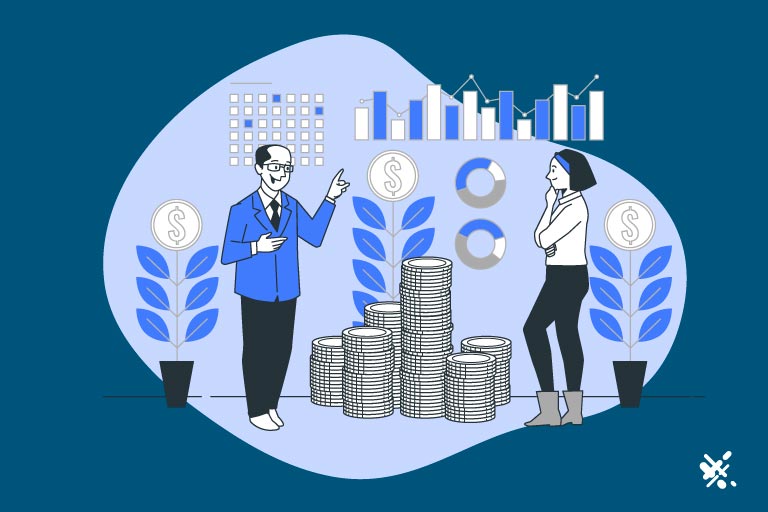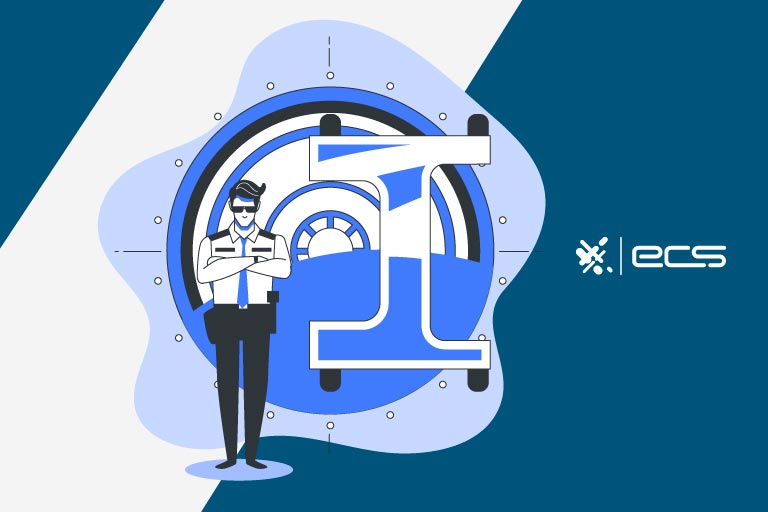“It was the best of times, it was the worst of times,” wrote Charles Dickens at the beginning of A Tale of Two Cities. Although he wasn’t speaking about economics, these words could aptly describe the ups and downs of the economy at large—and running a business through these cycles. One thing that’s on every business owner’s mind these days is “What is the impact of interest rates on my business?” Presumably in response to inflation that’s rising faster than it has in 40 years.
What is the Fed?
The Federal Reserve (central bank) was created in 1913 as a central mechanism for monitoring and controlling the monetary system. The thinking went that a central bank would alleviate some of the ongoing financial crises like the Panic of 1907. Later crises like the Stock Market Crash of 1928 and the subsequent Great Depression resulted in increased power for the Fed and its monetary policies.
As defined by Congress in the Federal Reserve Act, the goal of the Federal Reserve Bank is to (1) maximize employment, (2) stabilize prices, and (3) moderate long-term interest rates. In all, the ideology of central banking is to keep the economy consistent.
Contrary to what you might think, the Fed, as it’s called, is not necessarily located in one central place, but rather made up of 12 regional banks. And contrary to what you might have heard, the Federal Reserve Bank does not print money. That’s done by the United States Treasury, which is a government organization.
The Fed, however, does set monetary policy for the banks of the land and manages the nation’s money supply. And part of that job means setting interest rates. This is due in part to the fact that when banks need money, they borrow it from the Federal Reserve. These banks in turn loan that money out to consumers and business owners…which means that the rates these banks set are impacted by those set by the Fed.
What’s This Fed Rate Hike All About?
The Fed rate hike means that the Federal Reserve is increasing interest rates. In particular, the Federal Funds Rate (also called the Federal Funds Target Rate). That means the cost of borrowing money is going up. Not only between banks, but it will trickle down to consumers and business owners as well.
The reason banks borrow money from each other and from the Fed is that they need to meet some liquidity requirements set by the Federal Government. These liquidity requirements are put in place to make sure that banks can reasonably meet potential demands from borrowers and providers of funds.
If you’re wondering who the biggest providers of funds are to banks, it’s probably you. Not you yourself, per se, but consumer (and business) depositors—e.g. individuals and organizations that open a checking account. If everybody kept their money under their mattress, there would be no need for a banking system.
What Do Banks Do With Your Money?
When you bring your money to the bank, it’s not kept in a neat little pile with your name on it. The bank takes that money and loans it out to homebuyers and businesses. They make money off those loans through interest, which they then send back to you in the form of a very nominal APY or annual percentage yield.
There have been times in history when depositors rushed to the bank to get their cash because of a panic or scare about the economy or food supplies. This has happened as recently as in 2022 in China when depositors rushed to secure funds amid lockdown scares. If too many people pull their money out of the system at one time, it could collapse from the lack of funds—because remember, the bank is not actually keeping cash on hand…they’re loaning it out.
This type of panic assisted in precipitating several catastrophic crashes. And it’s exactly the type of thing the government wants banks to avoid by imposing liquidity requirements. Those liquidity requirements in turn necessitate banks scratching each other’s backs. Which in turn, requires some standardization of the interest rates.
What Impacts the Fed to Increase Interest Rates?
There are a number of reasons why the Fed would increase interest rates. One is to slow down inflation. Inflation, contrary to popular belief, is not when money becomes less valuable, but when its purchasing power declines.
If the federal reserve wants to prevent inflation it should increase interest rates. However, raising interest rates is only a short-term solution for curbing inflation. Although much ink has been spilled on the long-term effectiveness of this strategy. Somewhat of a moot conversation, since the Fed will set the rates it wants anyway.
Inflation and (Some of) Its Causes
As for what causes inflation, there are several factors including:
Oversupply of Money
One is an oversupply of money in the economy. Something that may arguably be linked to this post-Covid inflation after the government printed trillions of dollars in relief funds. Overall, the government printed about $13 trillion in total. $5 trillion of which went to Covid Relief measures like stimulus checks.
Demand-pull
Demand-pull inflation occurs when consumer wages rise and people have more disposable income. As they buy more goods and services, it creates a certain amount of scarcity that drives up prices.
In a certain sense, demand-pull inflation is a positive barometer of the underlying economy and rates of employment. But the ironic end result may be some inflation that begins to spiral out of control. Especially if it outpaces wage increases.
Cost-push
Cost-push inflation occurs when production costs increase. So the sticker price increases as well. One significant piece of this puzzle is the cost of raw materials in the supply chain.
For instance, a bad agricultural yield resulting in a more limited wheat supply can raise the shelf price of grain products such as breads and cereals. This, in turn, limits the purchasing power and raises groans of exasperation from late-night munchers in search of Lucky Charms.
Incidentally, cost-pull inflation may (also) be part of the recent devaluation of the American currency. This is because so much of the supply chain was shut down during Covid. Resulting in increased cost of raw materials and their delivery to end users. Then of course, there is the glut of money in the system due to those trillions of dollars of CARES Acts and Great American Rescue Plans.
In theory, raising the price of borrowing money slows down economic activity. For instance, credit cards will now have higher interest rates, which leads to less consumer swiping. As consumer spending decreases, the inverse relationship between supply and demand goes to work. Lowering prices and cooling off inflation.

What’s the Impact of Interest Rates on Businesses?
As mentioned, rising rates cool down spending for both consumers and business owners. Take a few examples from both the consumer end of things and the business end of things to see how.
Let’s suppose someone has their eye on a new home in the ballpark of $500,000. If a potential 30-year mortgage has an interest rate of 7%, that’s going to be a whole lot more expensive than a mortgage at 5%. Not only in the long run, but also on a monthly basis.
To be precise, a 5% rate will result in a (roughly) $2,684 monthly payment, while a 7% rate (just two points higher) will result in a $3,327. That $643 may not seem like much, but it’s the difference (for many consumers) between financing an economy car versus a luxury sedan, shopping at Kroger versus a boutique supermarket, and picking out a wardrobe from Target versus scoring threads at Nordstrom’s.
There’s nothing wrong with living within your means, but when the price of borrowing money becomes more cost prohibitive, all other financial choices require some more careful analysis.
Now onto the business end of things. Let’s say a restaurant owner wants to open a second location, for which they’ll need a loan of a cool seven figures exactly. For the sake of simplicity, let’s use the same percentages as the mortgage above, but with a 15-year time frame. That would result in a $7,908 monthly repayment versus an $8,988 repayment, or a $1,080 difference—the cost of a part-time employee, perhaps.
How Do Interest Rates Impact the Economy?
As we’ve seen how interest rates affect businesses, we can determine that as interest rates rise, spending slows. And that’s the idea. Consumers and businesses are supposed to hold on to their money, which will (once again) put those laws of supply and demand to work. Cooling off hot prices.
This clearly results in some side effects, such as a reduced standard of living. One of the main effects of an increase in interest rates on businesses includes a reduction in activity that could increase cash flow.
Speaking of cash flow, since consumers have less spending power, that’s going to mean less cash flow for business owners. This, of course, is already a problem with inflation, potentially. Prices are higher, so consumers have less disposable income. While it seems counterintuitive to slow inflation rates down by raising interest rates, the hope is that over the course of a few months, the reduced economic activity will stabilize things.
What Can You Do For Your Business During Inflation?
So now, the million-dollar question that we’ve all been waiting for: What can you, as a small business owner, do about all this? Consumers are going to spend less. In fact, some consumers will stop shopping for certain discretionary things altogether. You’re going to have to compete against other businesses even more than usual for limited purchasing power.
But, before you put on that clown suit and head to the nearest street corner to wave a sign around, there are some other things you can do (unless you’re a bit of a performer and find that sort of thing thrilling).
It’s time to look at your existing debts and do some consolidation. This is especially true if any of these debts are variable. Meaning that the interest rate can change in accordance with the prime rate or other indexes.
Debt Consolidation
For credit card debt (and even some other forms of outstanding debt) you can use something called a balance transfer to bring all the balances onto one account. Usually at a 0% interest rate for a certain time period ranging from 12-24 months.
You could explore opening new lines of credit to consolidate your outstanding debt obligations. For instance, if you have a few outstanding business loans with interest rates of 10% or more (because you got them earlier in the history of your business with less established credit,) you’d do better moving them to a 7% consolidation business loan. Even though rate hikes may have increased the cost of opening up a new loan, in your case 7% still beats 10% by three points.

Cut Assets
It may also be time to cut some underperforming assets. With the cost of borrowing money going up, other business owners will be looking for discounted equipment or inventory. Which you may be able to offer if it’s sitting idle. The cash can be put toward paying down your own debts before refinancing them. Or put it on reserve in case the economic downturn continues.
Layoffs
When it comes to underperforming human capital, some more thought and consideration may be needed, but layoffs are just one difficult part of economic downturns. In fact, it’s just one of the uglier realities of bad economic times. Businesses in every industry are hard hit by inflation when it comes to hiring and retaining talent. Around 60% of polled business owners said that payroll costs have increased, which led to 45% of those businesses putting on a hiring freeze.
Can Your Business Profit from Rising Interest Rates?
That’s all on the financial end of things. But there are also ways that rising rates will impact your interactions with consumers. As mentioned, consumers are strapped. Now may be the time to think outside of the box with some new approaches to purchasing. And as it turns out, some of these ideas may become trees that produce fruit for a lifetime.
Attract and Retain Customers with Point-of-Sale Financing
One of these out-of-the-box approaches is the offering and promotion of POS loans. Point-of-sale loans are not like store credit cards, per se. They are unique financing arrangements for a specific purchase, whereby the purchase can be broken up into monthly payments. Interest may or may not be involved in the transaction. In fact, fintech companies like Klarna do not even make interest part of the arrangement, which of course is appealing to consumers.
If you’re worried about customers defaulting on their obligation to you, there’s no need to worry about that, because the POS lender will pay you just a few days after the sale is completed. Leaving the customer in debt to them, the lender, and not you, the business. While interest may not always be part of such an arrangement, it can be. Which in the long term, results in more money for you.
Consider Your Savings and Investments
Another way to profit from rising interest rates is to put some of your money to work in savings and investments. The rate hike also impacts the interest rates that financial institutions pay out to depositors.
While brick-and-mortar banks are notorious for no longer offering desirable APYs on accounts, there are plenty of online banks that are offering 4% and 5% rates on your money. Depositing $10,000 of unused cash in one of these outfits could yield a decent return, especially if the money is not doing anything already.
The Impact of Inflation on Businesses Means You Must Work Smarter, Not Harder
Rising interest rates may force you to contemplate new solutions to business problems, as mentioned.
Implementing Automation
If you haven’t already, now might be the time to check out automation and software subscriptions that can streamline your business. These types of solutions can save money in the long run.
Even if they require breaking a little sweat in the research and development department at first. Sometimes these solutions may be related to downsizing your payroll. For instance, outsourcing some operations to contractors instead of employees.
Consider Social Media Marketing Strategies
You may also want to rethink your customer-facing marketing strategy. With less money to waste on inefficiencies, you’ll need to brainstorm ways to make sure your words are delivered to the right address. If you haven’t already, social media marketing is a cost-effective marketing tool that could easily supplant some of your more traditional marketing.
You can target ads to specific, nuanced demographics including age, zip code, gender, and interests. While playing around with Instagram ads may not be something you considered when it was easier to get business loans and pay a marketing agency, it may be something you figure out now…with very beneficial long-term results.

Wrap-Up: The Federal Reserve Interest Rate’s Impact on Your Businesses
On the surface, rising interest rates can make life more difficult for consumers and business owners. And while the reduced cash flow from more limited consumer spending power makes it hard to say this cloud has a silver lining, the hope is that it will cool the rampant increase of prices.
In terms of long-term prognosis, that will be of greater benefit to your business despite the temporary decrease in cash flow. And to combat the effects of this cash flow, there are some simple strategies with which you can engage (refinancing debt, downsizing, and exploring greater efficiency and automation) that can have a long-term positive impact on your business.
To contact sales, click HERE. And to learn more about ECS Payment Processing visit Credit & Debit.
